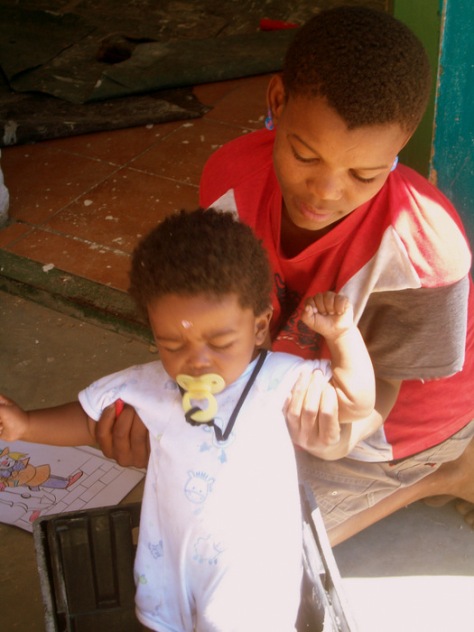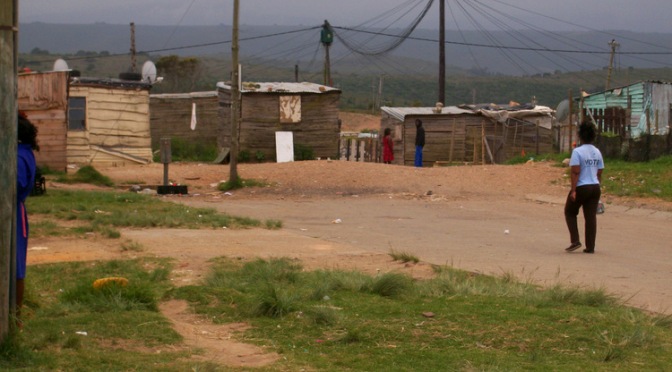– Megan Reddering
Since I started recycling three years ago my perceptions of waste have drastically changed. I realized that about seventy-five percent of what I previously took to be waste could actually be recycled. This reduction in my own production of waste has made me more aware of waste and how it comes to be waste. When can something be classified as waste? Is this classification different for different people? Why is there a difference in what people consider to be waste?
In my neighbourhood it is waste and recyclables collection day every Tuesday. I go for a run every Tuesday at six in the morning and I noticed that already at that early time homeless people with their trollies start rushing towards the neighbourhood. Many people put their waste bags and recycle bags out the night before, so these early birds I’ve see migrating up the Dalsig hill are doing so in hope of getting the best pick out of our waste and recyclables. Whenever I see them digging about in the bins it seems like they are on a kind of a treasure hunt and I am ashamed that what appears to be waste to me and the rest of the neighbourhood seems so precious to them.
This made me think back to the December holidays when I volunteered at a soup kitchen in the industrial area that is right next to one of the informal settlement just outside Plettenberg Bay, and I realized that all the shacks I had seen were made out of things that had been used for other purposes before. I did a lot of work with the children in the area and I was completely blown away with how little they are satisfied with. They made anything they laid their hands on into some kind of toy; old bottles, crates, boxes and ropes are just some of the things I saw them playing with or reusing as it were.
During the time I was volunteering at the soup kitchen a room in the building used for something else previously was being converted into a little classroom to keep the smaller children whose parents cannot afford to send them to crèche off the streets and to provide a safe place for activities for the bigger children during school holidays. While the classroom was being fixed up we did our activities outside on the stoop and the one day one of the kids came running to me very excitedly with a big crumpled and muddy poster he had picked up somewhere, which I could see had previously been used in a classroom and said, “Teacher for classroom” with a huge very proud smile on his face. The poster was in no condition to go up on the wall and I had to throw it away once the children had left.
Looking back on my time at the soup kitchen and seeing the homeless people every Tuesday I have realized that these are perfect examples of how huge the differences are on the view of what waste is in a country like South Africa with such great economic inequalities. I read an article by D. Scott on low carbon citizenship this week and this quote from that article sums up the point I want to make, “The best way to reduce carbon consumption is to be poor.”





